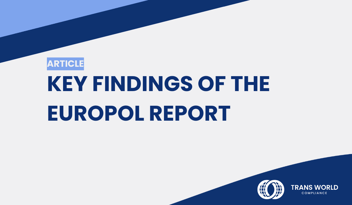First glimpse of CRS Data Quality
The OECD has provided the first glimpse of CRS Data Quality. This initiative is useful for Stage 5, and perhaps Stage 4 of our AEOI Journey. It provides for overall match rates and types, along with specific feedback. In Stage 5, when CRS data is being used, and reported records are matched to local residents, feedback is provided to the sending country to improve the data quality. In theory, the OECD claims the XML can be used during Stage 4 to provide feedback to local Financial Institutions, however, this does not make a lot of sense. If a local FI reports a German citizen, the local tax authority has no record of the account, and if they do it is most likely because the local FI furnished the information.

A Roadmap for Tax Authority AEOI Success
- For years Tax Authorities have been conducting exchanges of tax data between a limited number of jurisdictions under separately agreed upon terms, however, the first global exchange of tax data occurred with the US in 2016 under their Foreign Account Tax Compliance Act (FATCA) tax reporting regime and expanded with its international twin, the Common Reporting Standard (CRS) in 2018. The OECD’s Base Erosion and Profit Shifting (BEPS) iniative has since added additional types of informaton that also fall under this global Automatic Exchange of Information (AEOI) iniative.
At Trans World Compliance, we have identified five major stages for a successful Tax Authority AEOI implementation. Understanding and planning for these stages is critical for sucess.
| Prepare | Educate | Measure Data | Analyze Data | Use Date |
|
|
|
|
|
The Tax Authority AEOI Journey includes:
- Prepare. This step includes putting in the legal framework, developing (in house) or research (buying) technology solutions, identifying stakeholders, and building an educational framework.
- Educate and Stand-up a System. Educate the stakeholders with the traditional who, what, why, when, and how. Who needs to report? What needs to be reported? What are the consequences of not reporting? When do they need to report? And how are they going to report? Setup the technology and test the system. Getting the right technology is critical to achieve the desired ends.
- Measure Data Received. Are stakeholders using the system and reporting data?Why or why not? If a sufficient level of reporting is not achieved, a Tax Authority may have to revise their education and repeat step 2.
- Analyse Data Accuracy. Are stakeholders reporting accurate and complete data? Why, or why not? What are the barriers to getting good data?
- Use Data Received. Apply the data to other systems.
Note that each stage can take years.

Although FATCA was enacted by the US Congress in 2010, it wasn’t until 2016 that a system began receiving production data and the first exchanges of information took place (including FY 2014 and FY 2015 data). It took six years to prepare, educate, and deploy the technology for exchange of FATCA information.
An Inspector General Report in 2018 showed that FATCA had cost over $380m, but recouped just over $1m in back taxes and penalties. Since then there has been little evidence of substantial progress in the use of data. Clearly, although a decade into the program, the US is not at stage five. The report did note that since inception (FY2014 through FY2017), there were only 8 million accounts reported and over half the reported accounts did not include valid Tax ID Numbers (TINs). The state department estimates there are approximately 9 million US Citizens abroad, not counting US citizens living in the US with assets or investments overseas. In addition, the report also notes that only one third of the registered Financial Institutions filed any reports. Without a Nil reporting requirement, the US is unable to determine if the Financial Institution simply had no US citizens as clients and therefore had no need to report, or if they failed to meet their reporting obligations.
The bottom line is that the US seems to be failing at both Stage 3 (getting Financial Institutions to report) and Stage 4 (getting accurate reporting). With incomplete and unreliable data, they are unable to move to Stage 5 and actually use the data. Even worse, the US seems unsure how to fix the situation and the program continues to limp along. Without a clear understanding and planning, even the largest tax authorities can fail.




